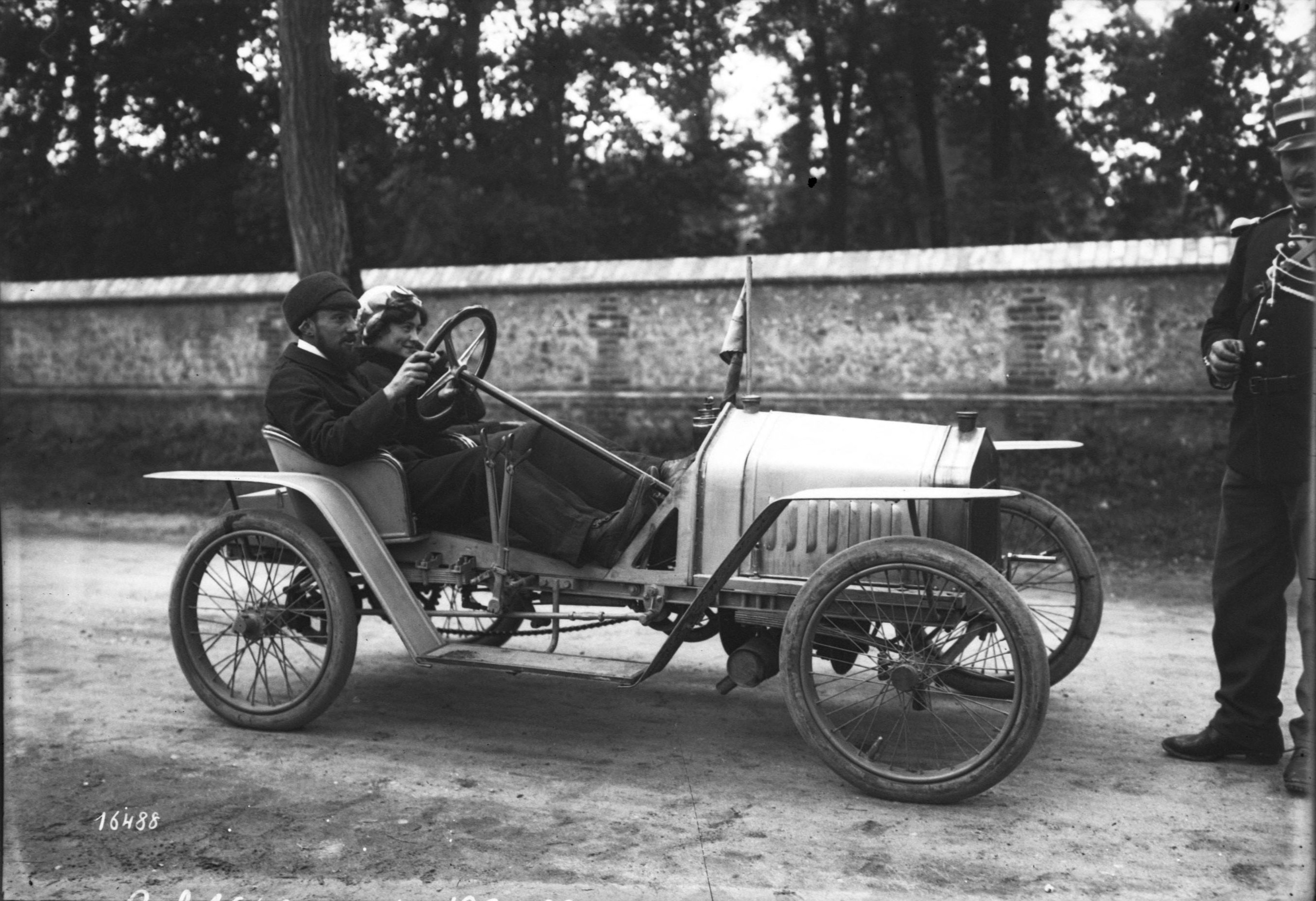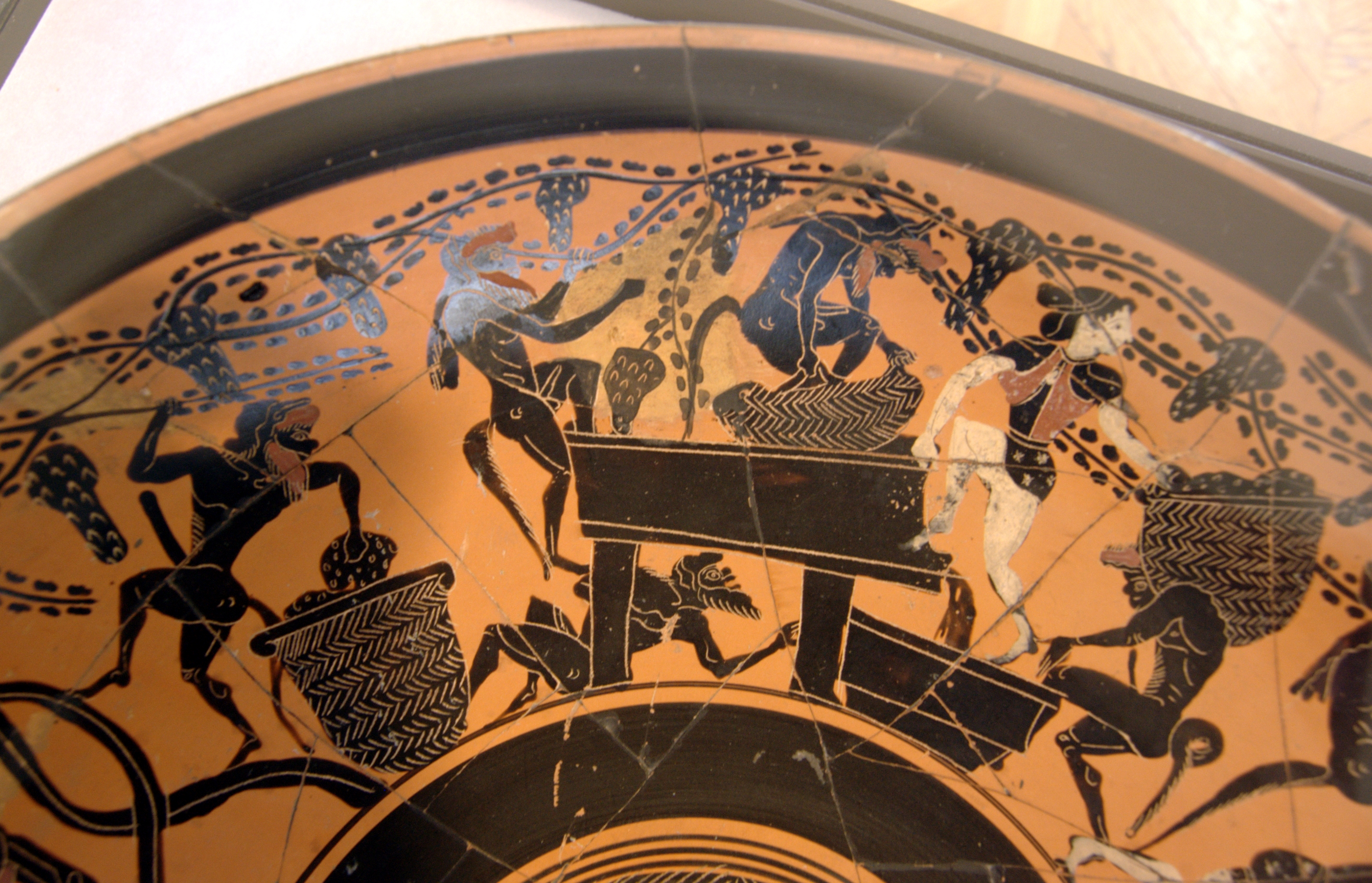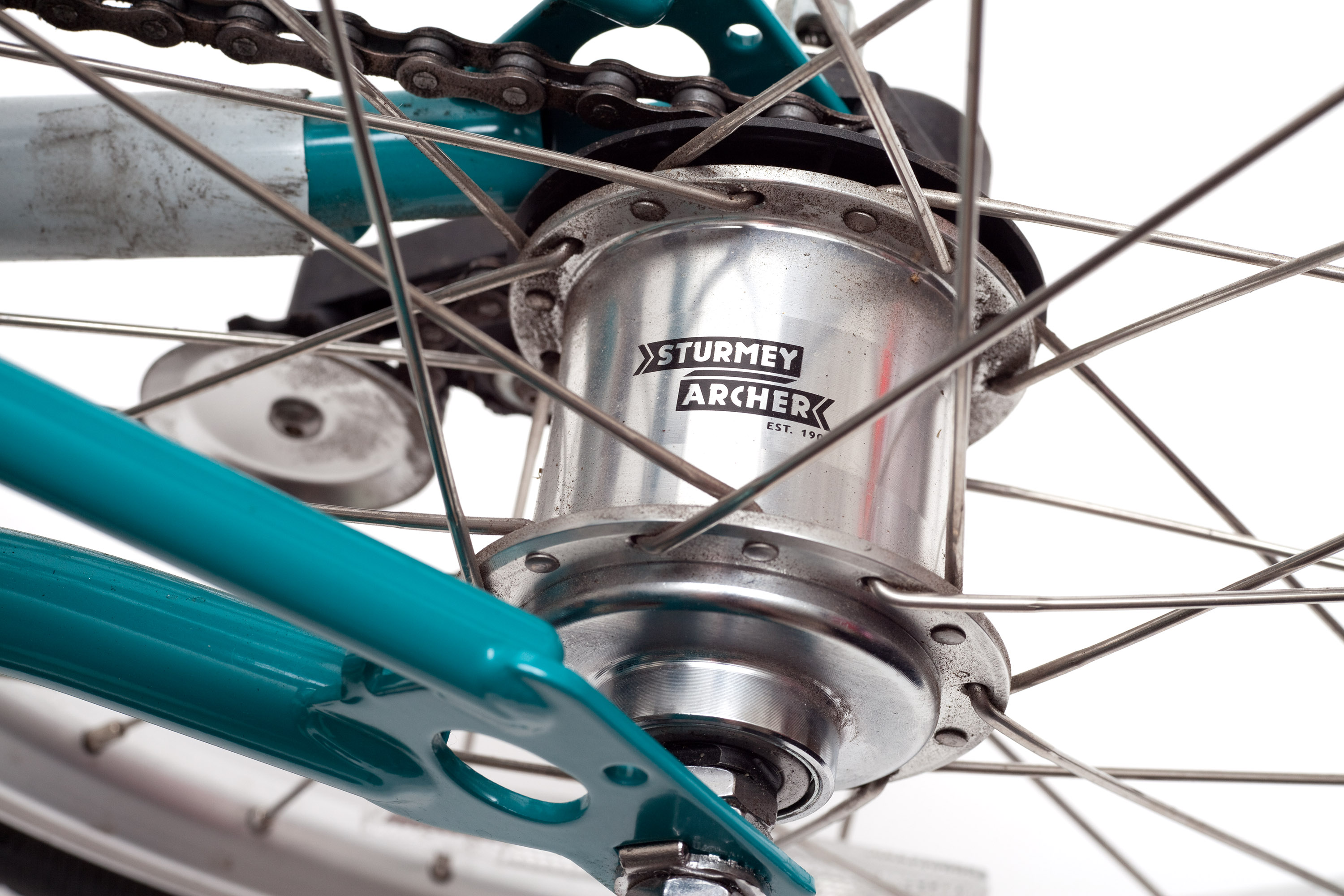|
AV (cyclecar)
The AV was a British cyclecar manufactured by Ward and Avey in Somerset Road, Teddington Middlesex between 1919 and 1924. It was one of the more successful cyclecars and was based on a design bought from Carden and built in the factory that they had previously used. At the peak they had 80 employees. The first model was a single-seater, the Monocar, only wide with bodies built by the Thames Valley Pattern Works out of wood, plywood or even compressed paper. The complete car only weighed about . Engines were rear mounted, air-cooled and rated from 5 to 8 hp. There was a choice of JAP (most commonly), Blackburne or rarely MAG units. Gearboxes were either a two-speed epicyclic unit with foot-operated change or three-speed Sturmey-Archer with chain drive to the rear axle. Steering was by a wire and bobbin system with the entire front axle being pivoted on early cars. Several hundred were made. The Monocar was described by ''Ixion'' of ''The Motor Cycle'' as "a low, coffin-shape ... [...More Info...] [...Related Items...] OR: [Wikipedia] [Google] [Baidu] |
The Motor Cycle (magazine)
''The Motor Cycle'' was one of the first British magazines about motorcycles. Launched by Iliffe and Sons Ltd in 1903, its blue cover led to it being called "The Blue 'un" to help distinguish it from its rival publication ''Motor Cycling (magazine), Motor Cycling'', which, using a green background colour, was known as "The Green 'un". Many issues carried the strapline "Circulated throughout the World". The covers eventually used a variety of different background colours after 1962, with a name-change to ''Motor Cycle''. Features Noted for detailed road tests of contemporary motorcycles and articles on readers' bikes, the magazine had regular features, including "Current Chat" and "Letters to the Editor" where many of the key issues relating to British motorcycling of the day were debated. The contributors often signed their pieces with pseudonyms such as ''Torrens'' (Arthur Bourne, one of the Editors) and the famous ''Ixion'' (Canon B.H. Davies). Recent history From 1962, ... [...More Info...] [...Related Items...] OR: [Wikipedia] [Google] [Baidu] |
Defunct Motor Vehicle Manufacturers Of England
{{Disambiguation ...
Defunct (no longer in use or active) may refer to: * ''Defunct'' (video game), 2014 * Zombie process or defunct process, in Unix-like operating systems See also * * :Former entities * End-of-life product * Obsolescence Obsolescence is the state of being which occurs when an object, service, or practice is no longer maintained or required even though it may still be in good working order. It usually happens when something that is more efficient or less risky r ... [...More Info...] [...Related Items...] OR: [Wikipedia] [Google] [Baidu] |
Cyclecars
A cyclecar was a type of small, lightweight and inexpensive car manufactured in Europe and the United States between 1910 and the early 1920s. The purpose of cyclecars was to fill a gap in the market between the motorcycle and the car. A key characteristic was that it could only accommodate two passengers sitting tandem style or passenger behind the driver. The demise of cyclecars was due to larger cars – such as the Citroën Type C, Austin 7 and Morris Cowley – becoming more affordable. Small, inexpensive vehicles reappeared after World War II, and were known as microcars. Characteristics Cyclecars were propelled by engines with a single cylinder or V-twin configuration (or occasionally a four cylinder engine), which were often air-cooled. Sometimes motorcycle engines were used, in which case the motorcycle gearbox was also used. All cyclecars were required to have clutches and variable gears. This requirement could be fulfilled by even the simplest devi ... [...More Info...] [...Related Items...] OR: [Wikipedia] [Google] [Baidu] |
Vintage Vehicles
Vintage, in winemaking, is the process of picking grapes and creating the finished product—wine (see Harvest (wine)). A vintage wine is one made from grapes that were all, or primarily, grown and harvested in a single specified year. In certain wines, it can denote quality, as in Port wine, where Port houses make and declare vintage Port in their best years. From this tradition, a common, though not strictly correct, usage applies the term to any wine that is perceived to be particularly old or of a particularly high quality. Most countries allow a vintage wine to include a portion of wine that is not from the year denoted on the label. In Chile and South Africa, the requirement is 75% same-year content for vintage-dated wine. In Australia, New Zealand, and the member states of the European Union, the requirement is 85%. In the United States, the requirement is 85%, unless the wine is designated with an AVA, (e.g., Napa Valley), in which case it is 95%. Technically, the 85% r ... [...More Info...] [...Related Items...] OR: [Wikipedia] [Google] [Baidu] |
List Of Car Manufacturers Of The United Kingdom
:''This list is incomplete. You can help by adding correctly sourced information about other manufacturers.'' As of 2018 there are approximately 35 active British car manufacturers and over 500 defunct British car manufacturers. This page lists car manufacturers that build or built cars in the United Kingdom. Major current marques Current manufacturers ;A * AC (1908–present) *Alvis (2012–present) *Arash (2006–present) *Ariel (1999–present) *'' Aston Martin'' (1913–present) *Atalanta Motors (2011–present) ;B *'' Bentley Motors'' (1919–present) *Bowler Offroad (1985–present) *BAC (2009–present) * Brooke (1991–present) ;C *Caterham (1973–present) ;D * David Brown (2013–present) ;E * Eagle E-Types (2013–present) * Elemental Cars (2014–present) ;G * Gibbs (2004–present) *Ginetta (1957–present) *Grinnall (1993–present) *Gardner Douglas Sports Cars (1990–present) *Great British Sports Cars (2006–present) ;H * Hawk (1986–present) ... [...More Info...] [...Related Items...] OR: [Wikipedia] [Google] [Baidu] |
Rootes Group
The Rootes Group or Rootes Motors Limited was a British automobile manufacturer and, separately, a major motor distributors and dealers business. Run from London's West End, the manufacturer was based in the Midlands and the distribution and dealers business in the south of England. In the decade beginning 1928 the Rootes brothers, William and Reginald, made prosperous by their very successful distribution and servicing business, were keen to enter manufacturing for closer control of the products they were selling. One brother has been termed the power unit, the other the steering and braking system. With the financial support of Prudential Assurance, the two brothers bought some well-known British motor manufacturers, including Hillman, Humber, Singer, Sunbeam, Talbot, Commer and Karrier, controlling them through their parent, Rootes' 60-per-cent-owned subsidiary, Humber Limited. At its height in 1960, Rootes had manufacturing plants in the Midlands at Coventry and Birmingham ... [...More Info...] [...Related Items...] OR: [Wikipedia] [Google] [Baidu] |
Jowett
Jowett was a manufacturer of light cars and light commercial vehicles in Bradford, West Riding of Yorkshire, England from 1906 to 1954. Early history Jowett was founded in 1901 by brothers Benjamin (1877–1963) and William (1880–1965) Jowett with Arthur V. Lamb.Information published in compliance with the regulations of the Committee of the Stock Exchange, London. ''The Times'', 25 March 1935, p. 24. They started in the cycle business and went on to make V-twin engines for driving machinery. Some early engines found their way locally into other makes of cars as replacements. In 1904 they became the ''Jowett Motor Manufacturing Company'' based in Back Burlington Street, Bradford. Their first Jowett light car was produced in February 1906 but as their little workshop was fully occupied with general engineering activities, experiments with different engine configurations, and making the first six Scott motorbikes, it did not go into production until 1910, and then after more ... [...More Info...] [...Related Items...] OR: [Wikipedia] [Google] [Baidu] |
Sturmey-Archer
Sturmey-Archer was a manufacturing company originally from Nottingham, England. It primarily produced bicycle hub gears, brakes and a great many other sundry bicycle components, most prominently during their heyday as a subsidiary of the Raleigh Bicycle Company. In the past, it also manufactured motorcycle hubs, gearboxes and engines. The company was founded in 1902 by Henry Sturmey and James Archer under the guidance of Frank Bowden, the primary owner of Raleigh. In 2000, the assets and trademarks of Sturmey-Archer were sold to Sun Race of Taiwan which was renamed Sun Race Sturmey-Archer Inc. and production moved to Taiwan. Products All Sturmey-Archer gear hubs use epicyclic (planetary) geartrains of varying complexity. The AW is the simplest, using one set of planetary gears with four planets. The AM uses three compound planets with differently sized cogs machined from a common shaft to engage the gear ring and sun gear separately, while the close-ratio three-speeds, and h ... [...More Info...] [...Related Items...] OR: [Wikipedia] [Google] [Baidu] |
Cyclecar
A cyclecar was a type of small, lightweight and inexpensive car manufactured in Europe and the United States between 1910 and the early 1920s. The purpose of cyclecars was to fill a gap in the market between the motorcycle and the car. A key characteristic was that it could only accommodate two passengers sitting tandem style or passenger behind the driver. The demise of cyclecars was due to larger cars – such as the Citroën Type C, Austin 7 and Morris Cowley – becoming more affordable. Small, inexpensive vehicles reappeared after World War II, and were known as microcars. Characteristics Cyclecars were propelled by engines with a single cylinder or V-twin configuration (or occasionally a four cylinder engine), which were often air-cooled. Sometimes motorcycle engines were used, in which case the motorcycle gearbox was also used. All cyclecars were required to have clutches and variable gears. This requirement could be fulfilled by even the simplest devices su ... [...More Info...] [...Related Items...] OR: [Wikipedia] [Google] [Baidu] |
Epicyclic Gearing
An epicyclic gear train (also known as a planetary gearset) consists of two gears mounted so that the center of one gear revolves around the center of the other. A carrier connects the centers of the two gears and rotates the planet and sun gears mesh so that their pitch circles roll without slip. A point on the pitch circle of the planet gear traces an epicycloid curve. In this simplified case, the sun gear is fixed and the planetary gear(s) roll around the sun gear. An epicyclic gear train can be assembled so the planet gear rolls on the inside of the pitch circle of a fixed, outer gear ring, or ring gear, sometimes called an ''annular gear''. In this case, the curve traced by a point on the pitch circle of the planet is a hypocycloid. The combination of epicycle gear trains with a planet engaging both a sun gear and a ring gear is called a ''planetary gear train''.J. J. Uicker, G. R. Pennock and J. E. Shigley, 2003, ''Theory of Machines and Mechanisms,'' Oxford University Pr ... [...More Info...] [...Related Items...] OR: [Wikipedia] [Google] [Baidu] |
Blackburne (motorcycles)
Blackburne was a trade name of Burney and Blackburne Limited a British manufacturer of motorcycles from 1913 to 1922 at Tongham near Farnham, Surrey. They were also a major supplier of engines to other motor cycle and light car makers and continued to make these until 1937. Burney and Blackburne also made small aircraft engines. Blackburne Motorcycles The origins of the Blackburne motorcycle engine start with Geoffrey de Havilland, who had designed and built a motor cycle before he became interested in aviation. In about 1905 he sold the designs and patterns to two student friends for £5 when he was short of money, and they went on to form the Blackburne engine company. A patent for adjustable belt pulleys for motorcycles dating back to 1912, shows Cecil Stanley Burney, Edward Alexander (Alick) Burney, and pioneer aviator Harold Blackburn trading as Burney and Blackburne (not Blackburn), operating from Northchurch, Berkhamsted. They were incorporated shortly afterwards as ... [...More Info...] [...Related Items...] OR: [Wikipedia] [Google] [Baidu] |







